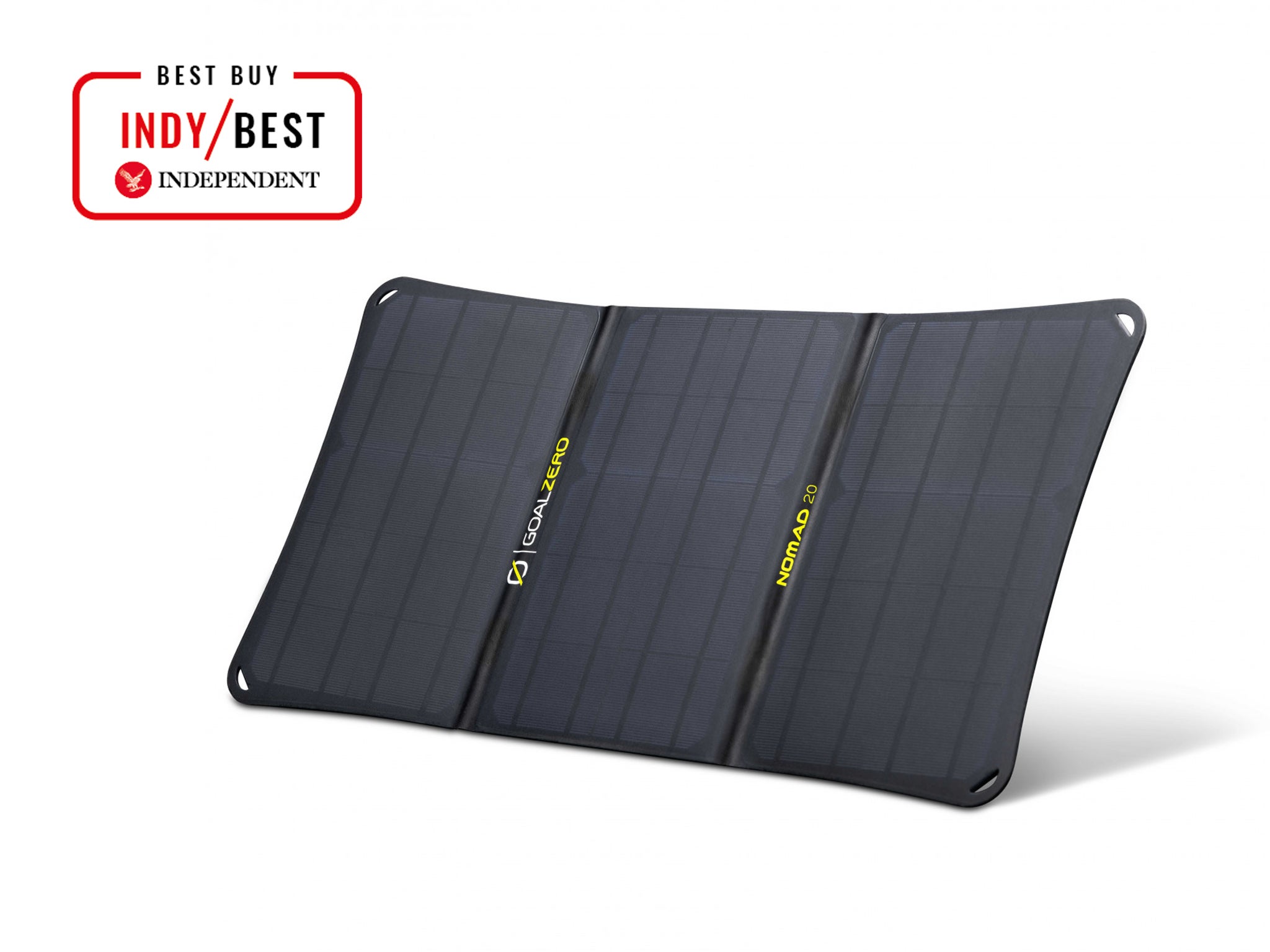
Stay up to date with notifications from The Independent
Notifications can be managed in browser preferences.
The Independent's journalism is supported by our readers. When you purchase through links on our site, we may earn commission. Why trust us?
8 best solar chargers for camping and backpacking, tried and tested
Never be stranded with a dead battery again – these panels will keep you topped up while the sun shines
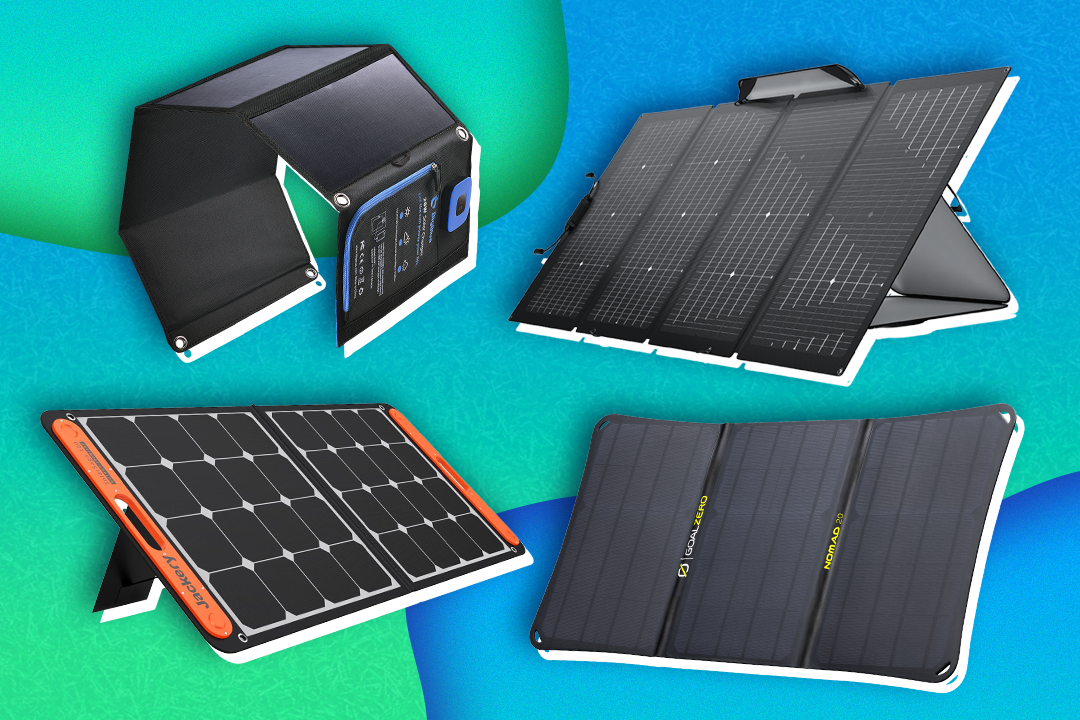
The sun is finally making its tentative return, which means garden parties, picnics in the park and – most thrillingly of all – the prospect of harvesting free electricity from the sky using one of the best portable solar panels.
While the heavy-duty solar panels you might install on your roof can help power everything from your washing machine to your portable air conditioner, smaller solar panels are perfect for keeping electronics like laptops, phones and tablets charged up while camping or hiking in the great outdoors.
Coupled with a portable power station, some of the more powerful panels in our list can be used to keep garden sheds, polytunnels or off-grid campsites thrumming with a limited supply of free electricity, even once the sun goes down.
Read more: The complete guide to solar panel home installation
Advances in technology mean today’s solar panels are smaller, lighter and more efficient than ever. Chargers that were once too big to carry can now be folded down to fit inside a travel case or hang from the back of your pack while hiking. So long as you’ve got enough sunlight, the best solar chargers can indefinitely extend the life of your phone, your headphones, and even your laptop.
Solar panels are also used to keep the batteries of cars, motorhomes and boats from going flat when they’re not being used, as most panels will start working automatically as soon as sunlight hits them, meaning you can set them and forget them.
How we tested
We tested these solar panels and chargers last summer, as well as throughout the darker and cloudier days that followed. Solar panels use the sun’s light to produce energy – not heat – so it’s possible to continue using them during the winter if the sky is clear and you can angle them correctly. You’ll still be severely limited by shorter daylight hours and overcast conditions, naturally.
We tested a range of solar chargers for different uses, from large, fold-out models capable of powering multiple devices at once, to portable power banks with convenient built-in solar panels. We trialled them under the changeable weather conditions of south England, as well as while camping and at a festival. These are the ones that really shone.
The best solar chargers for 2024 are:
- Best overall – Goal zero nomad 20 solar panel: £174, Decathlon.co.uk
- Best budget solar panel – Forclaz trek 500 10W: £34.99, Decathlon.co.uk
- Best for camping – Jackery SolarSaga 100W solar panel: £217, Hampshiregenerators.co.uk
- Best for campervans – Ecoflow 220W: £449, Hampshiregenerators.co.uk
- Best fold-out power bank – Addtop solar charger power bank: £33.59, Amazon.co.uk
Subscribe to Independent Premium to bookmark this article
Want to bookmark your favourite articles and stories to read or reference later? Start your Independent Premium subscription today.
Goal zero nomad 20 solar panel

- Best: Overall
- Power: 20W
- Weight: 1kg
- Size: 550mm x 20mm x 290mm
- Size (folded): 290mm x 20mm x 32mm
- Connections: One USB-A
- Why we love it
- Easy attachments
- Flexible USB port
- Take note
- Expensive
The Goal Zero nomad 20 is a flat and highly portable solar charger designed for backpackers and campers who want to travel light but need something more than a basic 5W panel. Half-a-metre wide when unfolded and weighing less than a laptop, it has an adjustable kickstand for aiming it directly towards the sun when placed on the ground. The rugged plastic frame has an attachment point on each corner, so you can strap it to a backpack or secure it firmly in place wherever it needs to be.
We liked that the USB output is on a lightly flexible arm, which helps prevent wear and tear on your charging cables. You can also chain multiple panels together with the included 6ft-long chaining cable to speed up charging.
Forclaz solar panel SLR 500 V2 - 10W
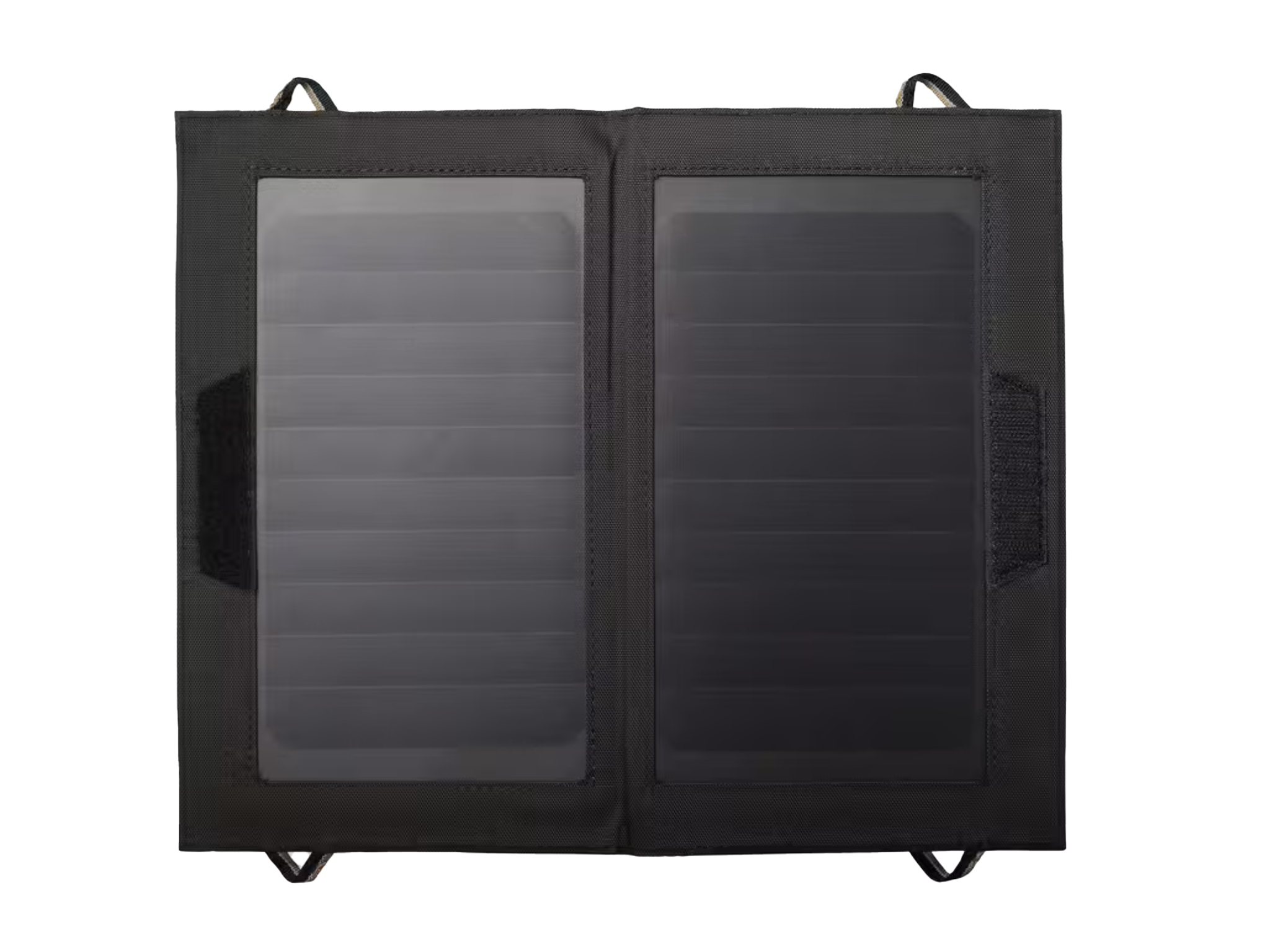
- Best: Budget solar panel
- Power: 10W
- Weight: 285g
- Size: 350mm x 290mm x 13mm
- Size (folded): 290mm x 180mm x 18mm
- Connections: One USB-A
- Why we love it
- Packs neatly into pouch
- Great value for money
The Forclaz solar panel SLR 500 is a 10W solar charger with a single USB port, ideal for keeping battery packs topped up while on the move or camping. A respectable power output places this versatile panel somewhere in the middle of the range, delivering more energy than a small trickle charger but less than a larger and more expensive solar panel.
The dual-panel design packs away neatly into a fabric pouch and can be firmly strapped to a backpack with the help of included carabiners and eight anchor points. A reliable charging solution that straddles the gap between low-and-slow panels and more serious hardware, the Forclaz panel suits casual campers and long-distance walkers.
Jackery SolarSaga 100W solar panel
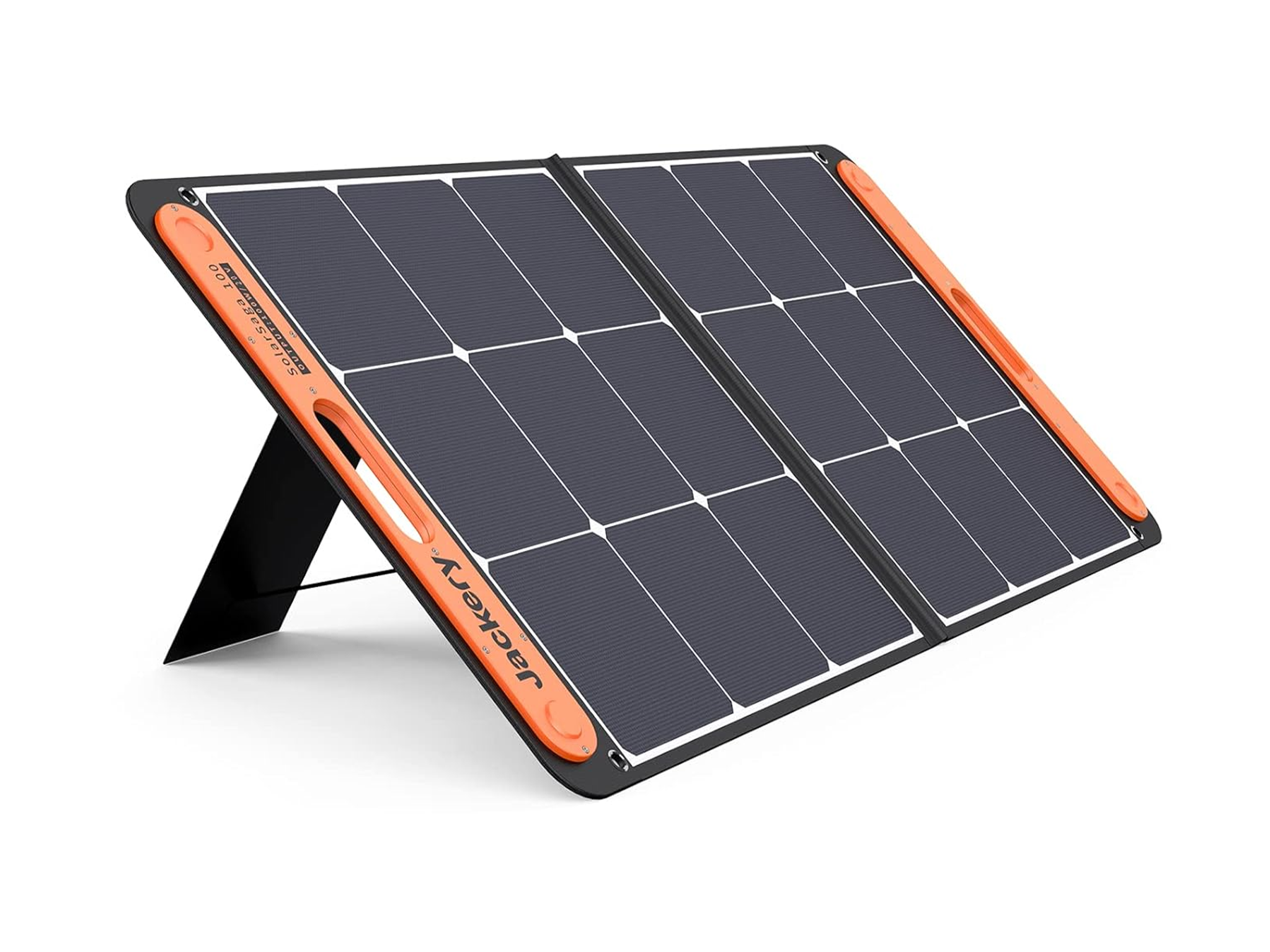
- Best: For camping
- Power: 100W
- Weight: 4.68kg
- Size: 122cm x 0.5cm x 53cm
- Size (folded): 60cm x 1cm x 52cm
- Connections: 1x USB-A, 1x USB-C, Anderson to power station
- Why we love it
- Packs away neatly
- Can charge power stations and devices
- Take note
- Not weatherproof
The Jackery SolarSaga 100W solar panel is designed to work with the Jackery power station – which is mainly how we tested it – but it can easily be operated solo thanks to its USB-A and USB-C outputs. The relatively high wattage and variable output of the panel means it’s a lot more suited to recharging a dedicated smaller power bank, which you would then use to charge your devices, rather than plugging your phone or laptop directly into it. That’s good news for anyone who travels light and doesn’t want to lug the heavy Jackery power station around with them.
The foldable panel itself is exceptionally well made, snapping shut magnetically and featuring a comfortable carry handle for safe transport and setup. The kickstand can be adjusted to any angle to get the most efficient performance possible, though the lightweight construction leaves it prone to falling over in windy conditions. Handily, there are reinforced eyelets and loops to secure it. The panel isn’t waterproof either, so we’d advise against leaving it outside the tent overnight.
Ecoflow 220W solar panel
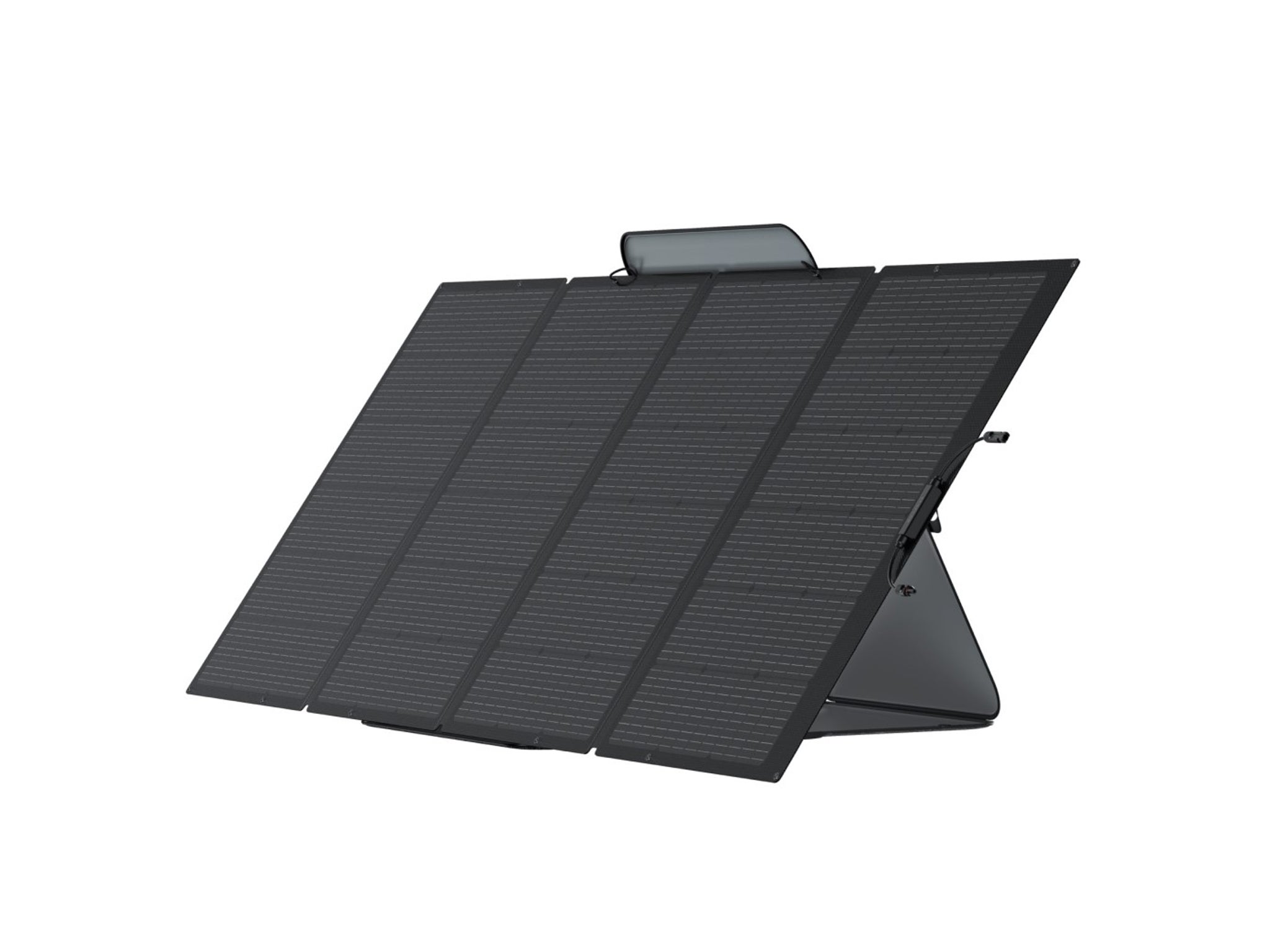
- Best: For campervans
- Power: 220W/155W
- Weight: 538g
- Size: 183cm x 82cm x 2.5cm
- Size (folded): 50cm x 82cm x 3.2cm
- Connections: MC4 solar port
- Why we love it
- Delivers lots of power
- Bifacial design
- Take note
- Not very portable
The Ecoflow 220W is a dedicated solar panel that produces roughly ten times the wattage of the next best entry in our list. This does make it less portable, but also way more useful for charging the specialist batteries needed to power small appliances at campsites, off-grid rental lodges, caravans, and for emergency home backup should your electricity ever fail.
The solar panel is bifacial, meaning it’s got a second 155W panel on the reverse side. This allows it to pick up a small amount of bonus current by absorbing some ambient light in bright conditions, which creates a more even power distribution in changeable weather conditions and so less wear on the device it’s charging.
We tested the 220W panel with Ecoflow Delta power station, a 14kg beast of a battery that features four USB-A ports (two fast-charging), two USB-C ports and four three-pin plug sockets. The station can be slow-charged by solar panel, or by mains power in less than two hours.
BioLite solar panel with integrated power pack
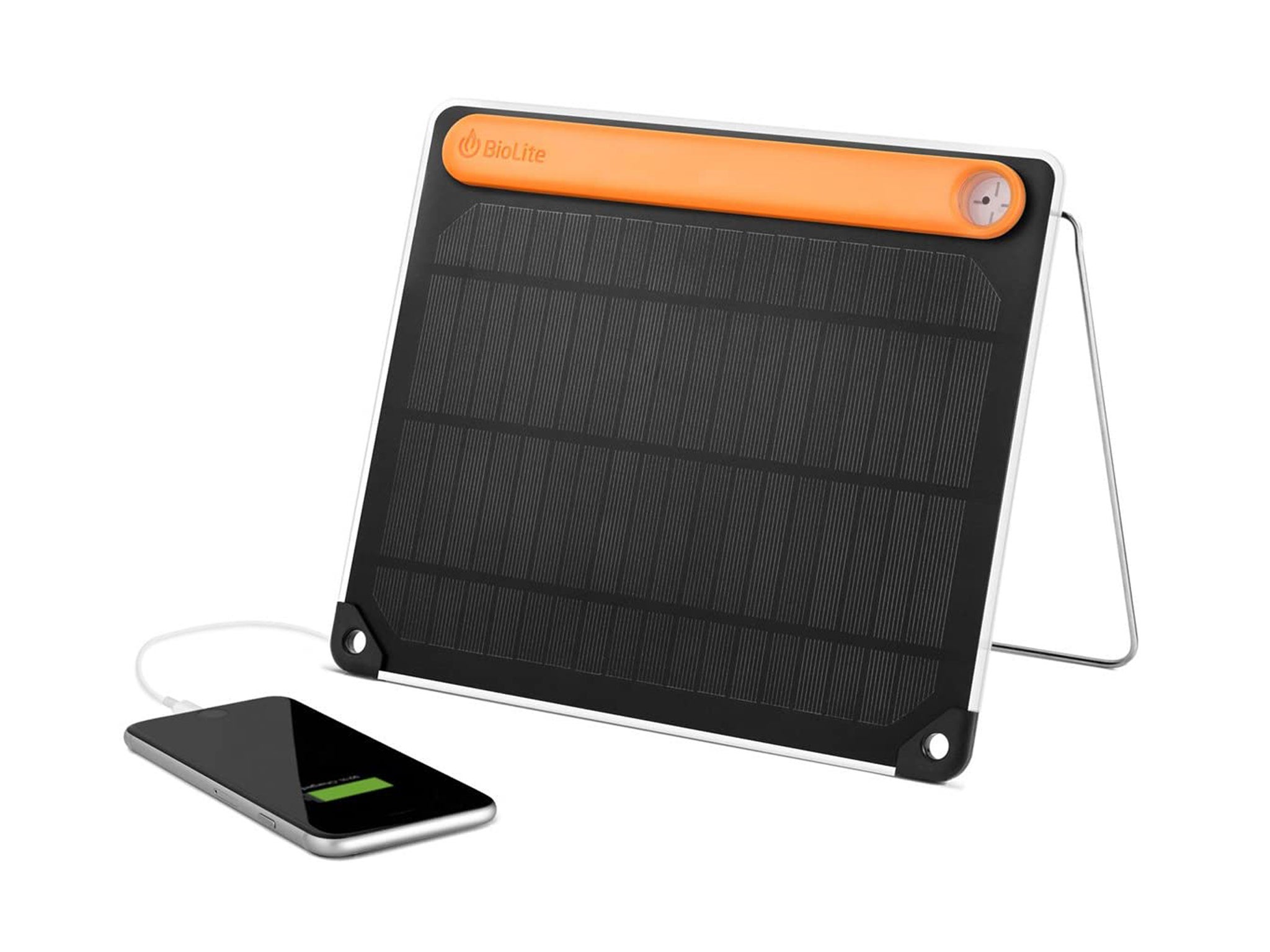
- Best: For phones
- Power: 5W
- Weight: 390g
- Size: 286mm x 39mm x 229mm
- Size (folded): N/A
- Connections: One USB-A
- Why we love it
- Helpful alignment tool
- Thin and lightweight
- Take note
- Just one port
This ultra-thin 5W solar panel is an all-in-one solution and, unlike other solar chargers in our list, has an integrated 2,200mAh battery pack embedded on the back. That’s about enough to charge your phone once, which is all you need in an emergency.
It has a simple wire-loop kickstand that can be threaded through a backpack strap, hooked from a tree branch or used to prop the panel up on the ground. Eyelets on the bottom corners also prevent it from sliding out of the sunlight as you walk. We liked the incredibly simple sundial on the corner of the device, which allows you to accurately aim the panel directly into the sunlight for maximum efficiency.
BigBlue 3 USB ports 28W solar charger
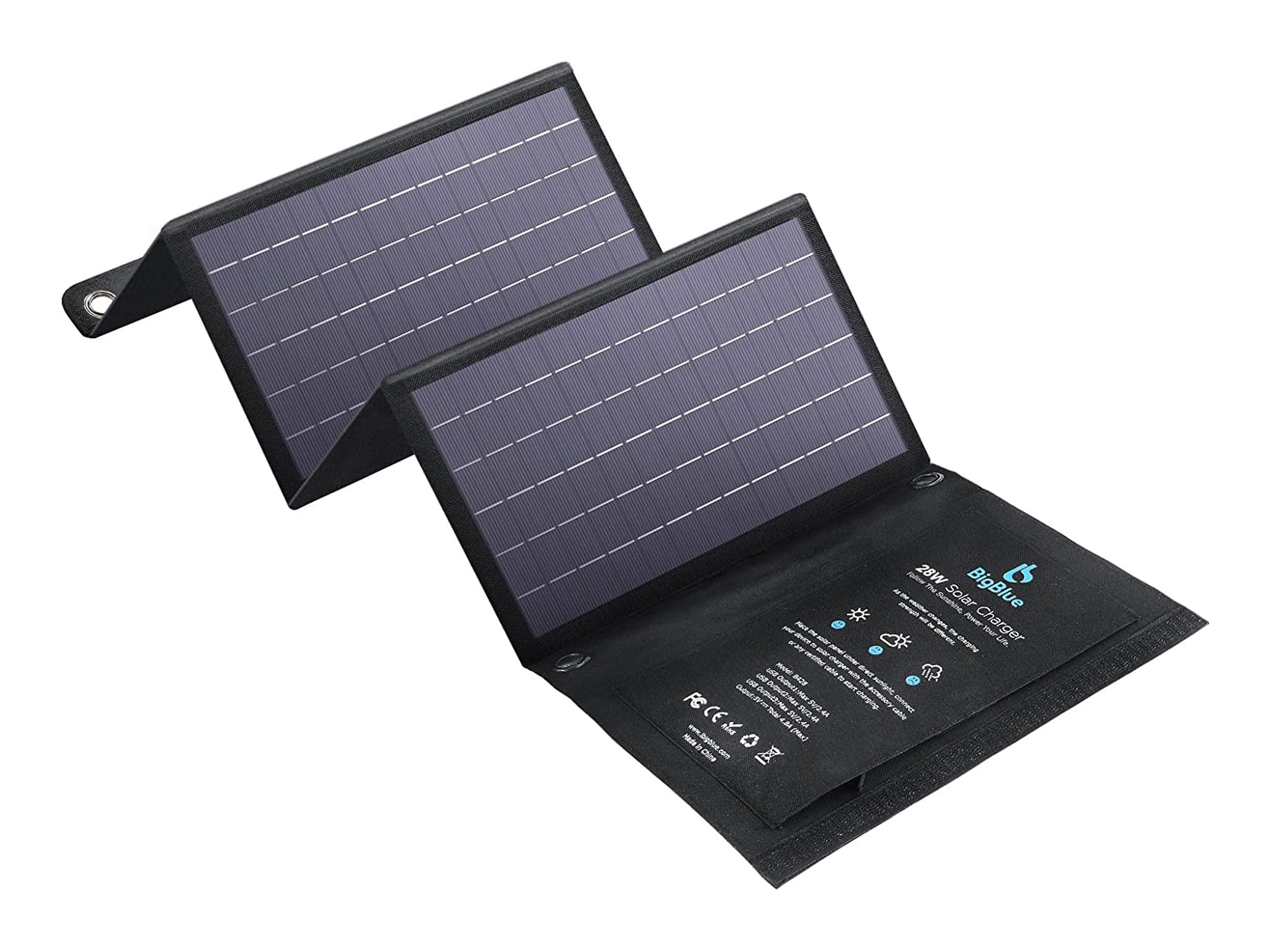
- Best: For multiple devices
- Power: 28W
- Weight: 1.2kg
- Size: 1,030mm x 280mm x 5mm
- Size (folded): 280mm x 190mm x 40mm
- Connections: Three USB-As
- Why we love it
- Camping and hiking attachments
- Can hang from tents and backpacks
A folding solar charger with 28W output in optimal skies, this four-panel BigBlue solar panel can recharge three low-draw, 5V devices at the same time through its three USB-A ports. Powerful enough to slow-charge tablets and other high-drain mobile devices, this solar charger has a flexible design that’s useful for hanging from your back as you walk, from your tent as you camp, or from a window frame for household power. It comes with carabiners for attaching it to a rucksack or frame.
Addtop solar charger power bank
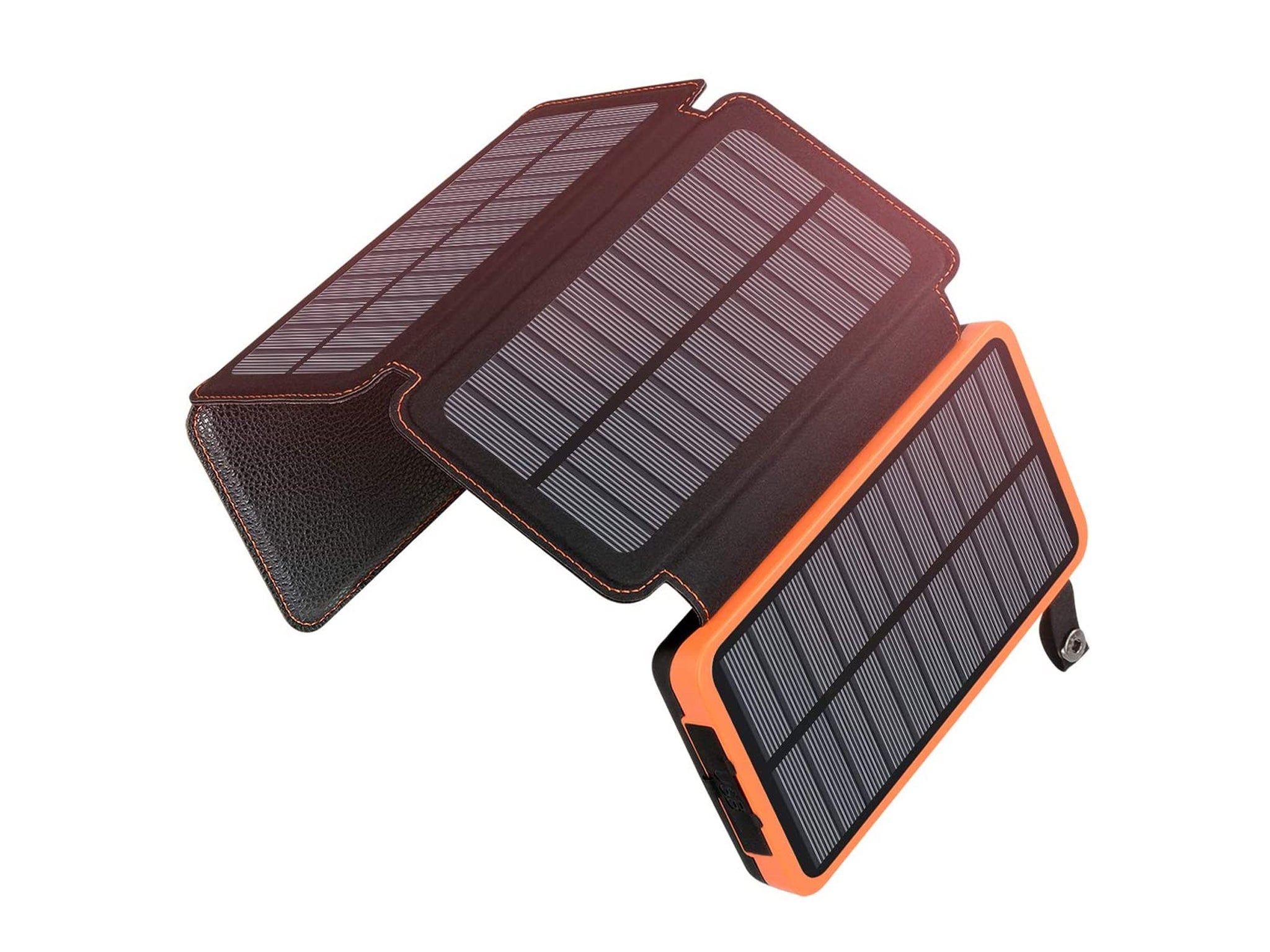
- Best: Fold-out powerbank
- Power: 5W
- Weight: 538g
- Size: 154mm x 90mm x 35mm
- Size (folded): 154mm x 360mm x 9mm
- Connections: Three USB-As
- Why we love it
- It is its own battery pack
- Take note
- Very slow charging in sunlight
This is a 25,000mAh battery pack with a fold out four-panel solar cell, which produces enough photonic juice to trickle-charge the pack’s power reserves over time. These super-portable chargers are limited by physics, that old killjoy, so don’t expect the rinky-dink panels to kick out enough energy to be able to run a laptop or survive entirely off-grid. They’ll charge the battery pack to full given a few days of bright, sunny weather.
Still, if you’re after a rugged outdoor power bank with a built-in LED torch that can top itself up in the background while you’re setting up camp and wrestling bears, this is a convenient and useful little gadget to have in your pack.
Halfords 10W solar power battery maintainer
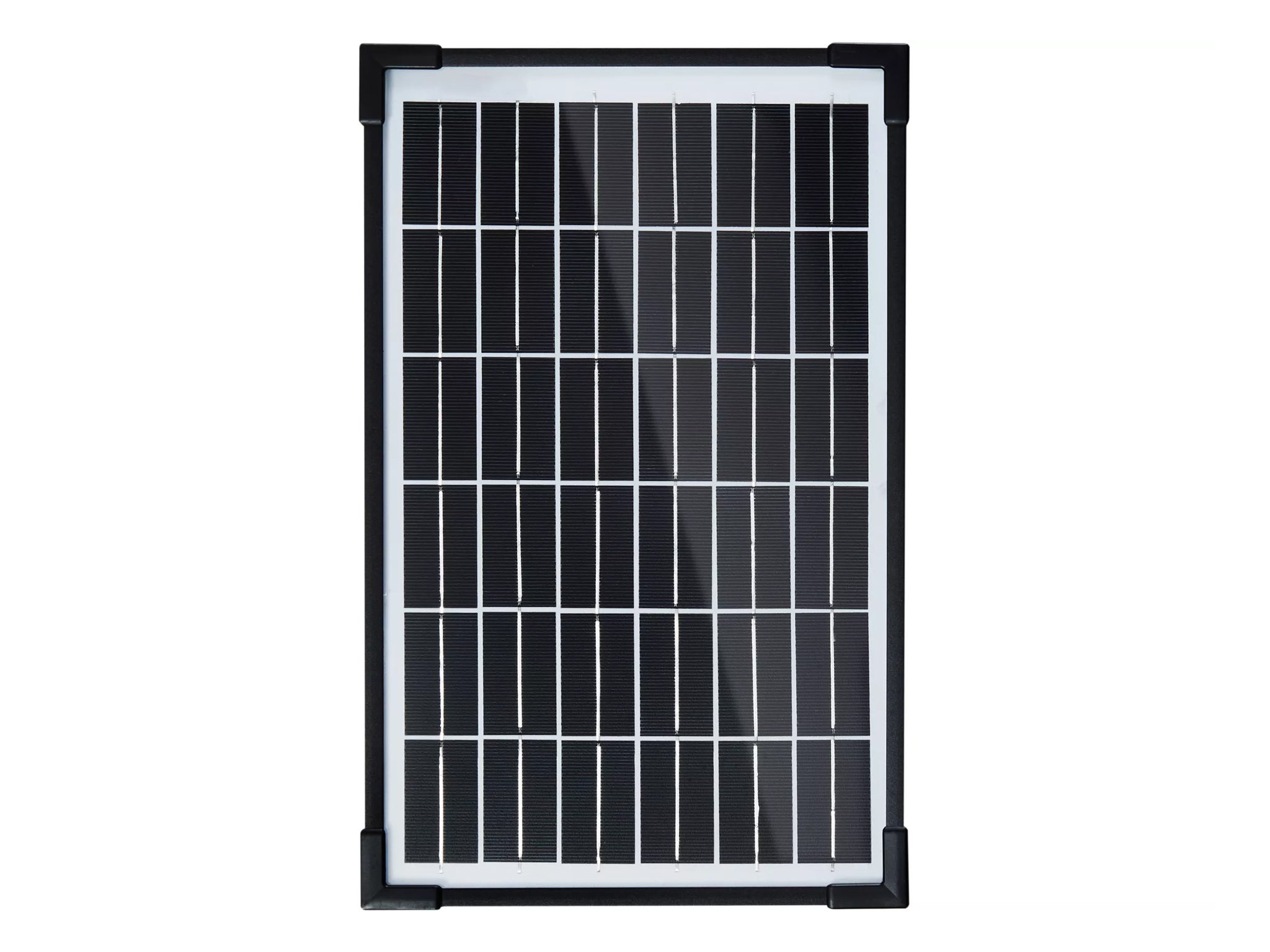
- Best: For car batteries
- Power: 10W
- Weight: N/A
- Size: N/A
- Size (unfolded): N/A
- Connections: 12V, DC power plug and battery clips
- Why we love it
- Easily affixed to windshield
- Comes with required clips
- Take note
- Not designed for travelling
If your car battery has a tendency to run dry when left idle for too long, you need a solar-powered car-battery maintainer. Even in the photon-averse British weather, a solar panel affixed to the inside of your windscreen can trickle enough charge into the battery to keep it refreshed and ready to go.
This 10W solar charger can be placed inside your car, but it’s waterproof and durable enough to be positioned outside for better efficiency. It clamps directly to the battery using crocodile clips or can deliver charge via your cigarette lighter if the car’s electrics allow it. One downside is that the basic design means there’s no interface or status light to confirm that any charging is happening, so if want to be absolutely sure it’s working you’ll need to use a multimeter to double check your car battery level.
The power output is rated for charging larger batteries too, such as those found on boats, barges and trucks.
Solar chargers FAQs
What should I look for when buying a solar charger?
Before buying a solar charger, you should think about the kinds of trips you will be using it for and what you’ll be charging. There are three things worth considering – output capacity, surface area and the flexibility of the panels.
- Output capacity: Solar panels are rated in watts. The higher the number, the more electricity is generated during a given time period, but the larger the panel will be.
- Surface area: The larger the solar panel, the more sunlight it can collect. This means batteries can charge at faster speeds, or more devices can be charged at once. For this reason, a large surface area is a good option for times when the weather conditions are poor or daylight hours are short.
- Semi-flexible or rigid panels: Flexible solar panels are great for those with limited bag space as they can be folded up for easy transport. They are also a great choice as they can be folded out to form a greater surface area than a rigid model.
- Kickstands: Solar chargers need to be aimed directly at the sun to achieve peak efficiency, with even a slight offset having a big impact on how much power they produce. Look for a solar charger with a kickstand that can be adjusted to any angle, not just in increments, so you can get the positioning just right.
How long do solar chargers last?
Solar cells deteriorate over time. While performance varies from model to model, most models are rated to maintain 99 per cent efficiency for upward of three years, with some of the more premium designs claiming to last an impressive 25 years.
Do solar chargers work through a window?
Yes, but the amount of energy harvested by the panel will be greatly reduced, especially if the glass is tinted or has UV light-blocking properties. According to Sol Volatics, a website that provides advice on solar panel installations, the efficiency of a panel can be reduced by up to 50 per cent, depending on the thickness and cleanliness of the glass. So yes, a solar panel left in a car on a sunny day will continue to work, but it’ll charge up a battery far less quickly than when outside in direct sunlight.
What are the best uses for solar chargers?
Portable solar chargers are best used to power small electrical items, such as smartphones and portable battery packs. They can be perfect for topping up the batteries of devices you might take on a camping trip, but generally aren’t much help when it comes to feeding more power-hungry products, such as televisions, portable fridges and kettles.
Some portable solar panels, such as the Ecoflow 220W (£449, Hampshiregenerators.co.uk) highlighted earlier, cost much more than others, are significantly larger, and therefore will harvest more energy. Such panels can, eventually, fill up an equally large portable battery pack capable of running anything with a domestic three-pin plug, but how quickly the battery charges will depend on weather conditions and how much sunlight the solar panel is exposed to.
Phones and laptops prefer a consistent flow of energy, but the power of output of solar panels varies based on weather conditions and the angle of the sun. Some phones will refuse to charge from a panel that’s fluctuating in output, so it’s always best to use the panel to recharge a portable power bank first, then charge your devices from that.
Will using a solar charger save me money?
A solar charger can technically save you money, though you’d need to recharge your devices a lot just to break even on using a solar charger at home. The power output of portable panels simply isn’t very high – it’s more than enough to charge electronics, but not enough to run appliances or heat tanks of water. Those energy-intensive jobs are where most of your electricity is used, so a portable solar panel will hardly make a dent in your household bills.
What are the alternatives if there is no sunlight?
Obviously, solar panels don’t work without sunlight to power them. If you live somewhere with reduced or no sunlight during the winter months (which includes the UK and parts of North America), you’ll see a dramatic downturn in solar panel energy output when the sun is low in the sky.
To supply electricity in a remote area with little sunlight, you’ll either need a very large battery pack to store up what little solar energy is available, or a fully fuelled diesel generator. The latter is by far the cheapest way of powering remote sites or an entire home, and, to deal with emergencies, they can be set up to kick into action in the event of power loss.
The verdict: Solar chargers
The Goal Zero nomad 2 has everything you might need in a solar charger: high wattage, an abundance of USB ports and a business-like folding design and the leading monocrystalline panel type.
For mains-style power output on demand, the Ecoflow portable power station and 220W panel is highly recommended.
Interested in a better phone to travel with? We’ve rounded up the best phones in 2024
